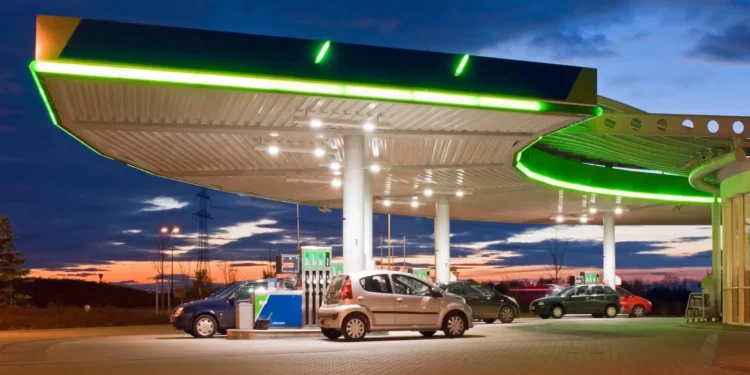In recent years, a growing number of retailers have started expanding beyond their traditional markets and venturing into the fuel business. This trend is reshaping the convenience retail landscape and creating new revenue streams for both large retail chains and independent stores. From global giants like Walmart, Costco, and Amazon to regional convenience store operators, the integration of fuel retailing with everyday shopping is becoming a strategic move aimed at attracting customers, increasing loyalty, and diversifying income sources.
As the energy market evolves—with sustainability, electric vehicles, and consumer convenience taking center stage—retailers entering the fuel sector are seizing a unique opportunity to combine fuel, food, and retail under one seamless experience. This article explores why this shift is happening, what benefits it offers, the challenges involved, and what the future holds for retailers in the fuel business.
1. The Changing Face of Retail and Fuel
1.1 The Blurring Lines Between Retail and Energy
Traditionally, fuel retailing was dominated by oil companies and specialized fuel distributors. However, as the margins in traditional retail have become thinner and competition stiffer, retailers have been seeking new ways to diversify revenue sources. Fuel stations—often attached to convenience stores—offer a consistent flow of traffic and an opportunity to sell additional products and services.
Retailers realized that customers who stop for fuel are also likely to purchase groceries, snacks, coffee, or even electronics. This cross-selling potential makes the combination of retail and fuel operations a natural fit and encourages more people to visit our blog, where we add daily updates on business and the latest developments in the business industry.
1.2 Why Fuel is Attractive for Retailers
The fuel business, despite its challenges, offers steady cash flow and high customer footfall. Even though fuel profit margins per liter are small, the overall volume and frequency of visits make it an attractive addition.
Moreover, fuel retailing increases brand visibility—customers recognize the retailer’s name at roadside stations, not just in malls or online. Retailers can also use fuel stations to introduce loyalty programs, link fuel discounts with in-store purchases, and create a broader brand ecosystem.
2. Major Retailers Entering the Fuel Market
2.1 Walmart’s Fuel Strategy
Walmart, one of the largest global retailers, has been gradually integrating fuel stations into its supercenter and neighborhood market locations. Through partnerships with major fuel suppliers like Murphy USA, Walmart offers customers discounted fuel prices via its membership and rewards programs.
This approach not only drives more traffic to Walmart stores but also enhances customer loyalty. Shoppers who fill their tanks at Walmart are more likely to do their grocery shopping there as well, leading to increased overall sales.
2.2 Costco’s Fuel Membership Model
Costco has taken a unique approach by linking fuel sales to its membership program. Only members can buy fuel at Costco stations, which typically offer lower prices than competitors. This creates a powerful incentive for consumers to renew or purchase memberships.
Fuel thus becomes a membership retention tool rather than just another product. Costco’s model has been so effective that many of its locations see long lines at their fuel pumps throughout the day.
2.3 Amazon’s Potential in Fuel and Energy
Although Amazon has not yet entered the traditional fuel retailing sector, its increasing investments in logistics, delivery fleets, and EV infrastructure suggest it might soon expand into the energy and charging business. Amazon’s focus on sustainability, combined with its vast distribution network, makes it a potential game-changer in electric vehicle (EV) charging stations or even renewable energy-based fuel retailing.
2.4 Other Examples: Tesco, Target, and Regional Players
In the UK, Tesco and Sainsbury’s have long offered fuel alongside groceries, creating a convenient one-stop solution. Similarly, Target in the U.S. and Carrefour in Europe have explored fuel partnerships to enhance customer convenience and brand loyalty.
At a regional level, independent retailers and local convenience stores are also entering the fuel market by partnering with fuel brands or distributors, often under franchise agreements that allow them to sell branded fuel while retaining local ownership.
3. Key Drivers Behind Retailers Entering the Fuel Business
3.1 Diversification of Revenue
Retail margins, especially in grocery and consumer goods, are notoriously thin. By adding a fuel component, retailers gain access to a new, consistent revenue stream that supports the business during seasonal or economic fluctuations.
3.2 Customer Convenience and Loyalty
Modern consumers value convenience above all. Being able to shop, refuel, and grab a coffee in one stop significantly enhances the shopping experience. Retailers capitalize on this by offering loyalty programs that combine fuel discounts with in-store purchases, keeping customers engaged across multiple touchpoints.
3.3 Increased Foot Traffic
Fuel stations naturally attract a steady flow of customers. Retailers use this to their advantage by locating mini-stores or full retail outlets alongside fuel pumps. Every fuel purchase becomes an opportunity to cross-sell additional goods or services.
3.4 Data and Consumer Insights
Retailers who operate fuel businesses gain access to valuable consumer data—including frequency of visits, purchasing patterns, and spending habits. This data can be used to personalize promotions, improve inventory management, and enhance the overall customer experience.
4. Challenges Retailers Face in the Fuel Business
4.1 High Initial Investment
Setting up a fuel station requires significant capital expenditure—from land and licensing to infrastructure, safety systems, and compliance with environmental regulations. For many retailers, this represents a major financial commitment that must be justified by long-term gains.
4.2 Regulatory and Environmental Compliance
The fuel industry is heavily regulated, with strict safety, environmental, and operational requirements. Retailers entering this space must ensure full compliance, which can be complex and costly.
Moreover, as governments tighten carbon emission policies, fuel retailers must adapt to future transitions—such as the shift toward EV charging and renewable fuels.
4.3 Thin Profit Margins
While fuel drives traffic, the profit margins are often slim. Most of the profits come not from the sale of fuel itself but from ancillary sales—like food, beverages, or car washes. Therefore, success depends on how effectively retailers can integrate value-added services.
4.4 The Rise of Electric Vehicles
The growing adoption of electric vehicles poses both a challenge and an opportunity. As fuel consumption decreases over time, traditional fuel stations may see declining volumes. Retailers must anticipate this shift by investing in EV charging infrastructure to remain relevant in the energy retail landscape.
5. The Role of Technology in Fuel Retailing
5.1 Digital Payment and Loyalty Integration
Retailers are leveraging technology to make fuel purchasing faster and more engaging. Mobile apps, digital wallets, and QR-based payment systems simplify transactions while linking them to loyalty programs. Customers can collect points or get instant discounts on their next in-store purchase.
5.2 Smart Fueling and IoT Systems
The use of Internet of Things (IoT) technologies enables better monitoring of fuel inventory, maintenance schedules, and equipment performance. This reduces operational downtime and improves efficiency.
5.3 Data Analytics and Customer Insights
Data analytics helps retailers forecast demand, plan promotions, and tailor offerings based on consumer behavior. For example, if data shows that most fuel customers buy coffee or snacks, retailers can optimize layouts to increase impulse purchases.
6. Sustainability and the Shift to Alternative Fuels
6.1 Embracing Electric Vehicle Charging Stations
As the world shifts toward electric mobility, retailers are adapting by installing EV charging points at their fuel stations. This transition is not just an environmental move—it’s a strategic investment in future consumer behavior.
Retailers such as Shell, BP, and Walmart are already investing heavily in EV charging infrastructure, allowing them to cater to both fuel and electric customers simultaneously.
6.2 Biofuels and Renewable Energy
In addition to EV charging, many retailers are exploring biofuels, hydrogen, and renewable diesel as cleaner energy alternatives. These not only help meet sustainability goals but also appeal to eco-conscious customers.
6.3 Green Branding Advantage
Retailers who lead in green energy adoption gain a competitive branding advantage. Consumers increasingly prefer businesses that demonstrate responsibility toward the planet. Offering sustainable fuel options or renewable energy integration helps retailers strengthen brand trust and loyalty.
7. Benefits of Retailers Entering Fuel Business
| Benefit | Description |
| Higher Customer Traffic | Fuel stations attract consistent daily visitors, boosting footfall for retail stores. |
| Increased Sales Opportunities | Cross-selling between fuel and retail leads to higher per-customer spending. |
| Customer Loyalty Programs | Integrated discounts and points across fuel and retail purchases drive retention. |
| Brand Expansion | Fuel outlets expand visibility and presence in new geographic areas. |
| Data Synergy | Retailers gain deeper insights into purchasing habits and mobility patterns. |
| Diversification | Reduces dependency on core retail products and stabilizes income. |
8. Case Study: The Success of 7-Eleven
The global convenience store chain 7-Eleven offers an excellent example of successful retail-fuel integration. The brand operates thousands of locations worldwide where fuel and retail services coexist seamlessly.
Customers can refuel, buy coffee, pay bills, and purchase snacks all in one stop. This one-stop convenience model has made 7-Eleven a global leader in customer loyalty and revenue diversification.
7-Eleven’s strategy includes:
- Partnering with major fuel suppliers.
- Offering 24/7 availability.
- Introducing digital loyalty programs (like 7Rewards).
- Expanding into EV charging networks in select regions.
This demonstrates how strategic fuel business integration can transform a retailer into a mobility and lifestyle brand.
9. Future Outlook: What’s Next for Retailers in the Fuel Business
9.1 Transition Toward Mobility Hubs
Fuel stations are evolving into mobility hubs—places where consumers can refuel, recharge, shop, eat, and even relax. Retailers who adapt early will dominate the future landscape of convenience mobility retail.
9.2 AI and Automation
The integration of AI-driven pricing, self-service kiosks, and automated payment systems will further streamline operations, reduce costs, and enhance customer experience.
9.3 Collaboration and Partnerships
Retailers may not go it alone. Strategic partnerships with energy providers, tech companies, and EV infrastructure firms will define success in the coming years.
Conclusion
The trend of retailers entering the fuel business represents more than a diversification strategy—it’s a complete reimagining of consumer convenience and mobility. By blending retail shopping, energy distribution, and digital technology, companies can create integrated ecosystems that serve customers’ everyday needs under one roof.
As the world transitions toward sustainable and digital energy solutions, forward-thinking retailers who invest now in fuel, EV, and hybrid energy offerings will not only stay relevant but also thrive in the evolving marketplace. The future belongs to those who see beyond pumps and aisles—those who recognize that convenience, energy, and experience are now inseparable parts of the retail equation.












